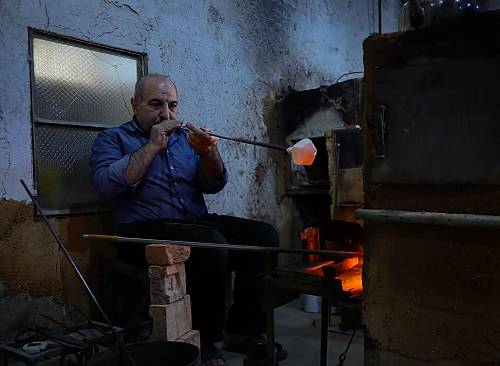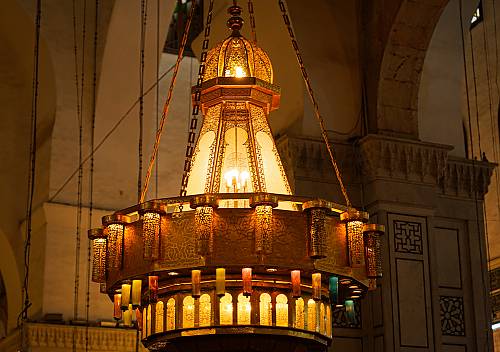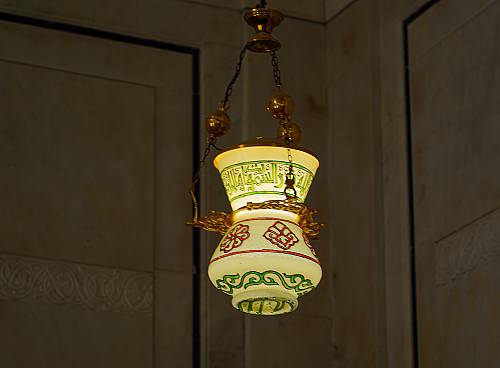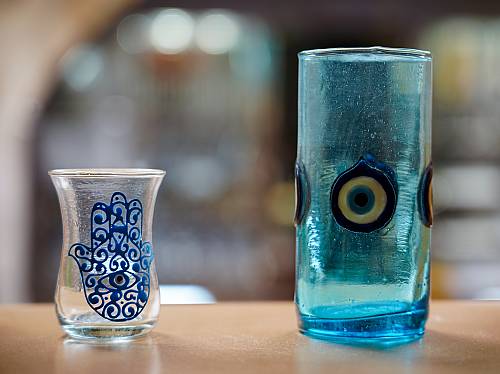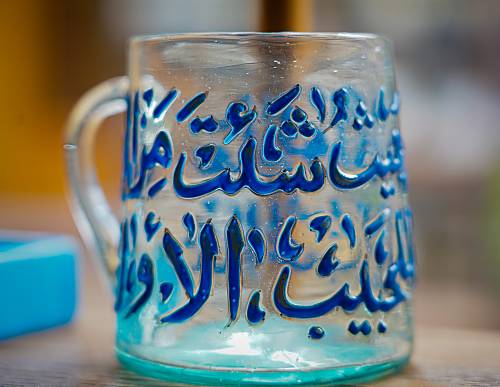Traditional Syrian glassblowing
Inscribed in 2023 (18.COM) on the List of Intangible Cultural Heritage in Need of Urgent Safeguarding

Traditional glassblowing in Damascus is the artisanal craft of creating glass objects using pieces of waste glass. To create an object, pieces of glass are placed inside a handmade brick oven to melt. The craftsman twists the molten glass around a hollow metal rod. He then blows into the rod to inflate the glass, using metal tongs to mould it into the desired shape, such as a cup, vase, lamp or ornament. Powdered dyes are used to colour the glass while it is still melted or to decorate the objects once they have cooled and hardened. Cultural symbols, such as the hand of Fatima, are often painted or engraved on the glass. Damascene glassblowing is characterized by the white, blue, green and crimson colours used, as well as the painted gold motifs. In the past, the practice remained within specific families, with the father passing on the secrets of the craft to his children. Today, the related knowledge and skills are passed down informally through hands-on practice and instruction in workshops. A source of livelihood for artisans, Damascene glassblowing contributes to a sense of continuity and belonging. It is also associated with social, spiritual and historical spaces and with the practices that take place therein.
